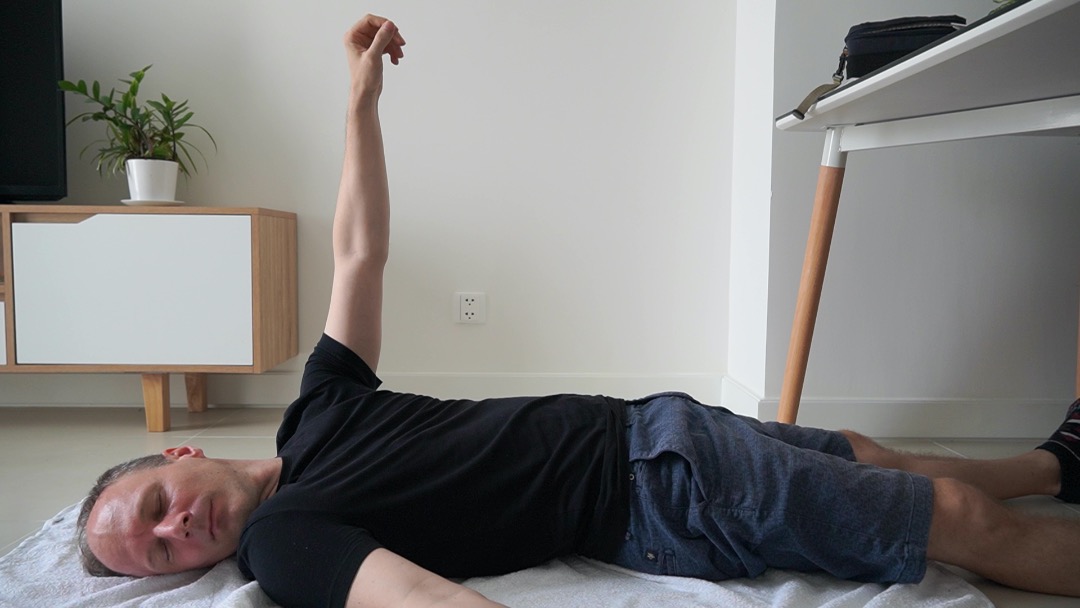Reaching like a skeleton
For the most part you are lying supine, on your back, with your left arm extended towards the ceiling. You rotate your left arm to find personal neutral, lift the arm towards the ceiling to discover kinematic linkage, leaning points, and unnecessary effort. g
This lesson is suitable for an introduction to explore and discover some basic principles of the method, such as why we lie down to free up resources. How we observe. How we identify unintended effort and personal neutral. How we work with the parasympathetic nervous system. How we set up a situation to explore kinematic linkage, and that there is no limit to improvement.
reachingtwistneck/shouldersupinesitting reaching_skeleton_1
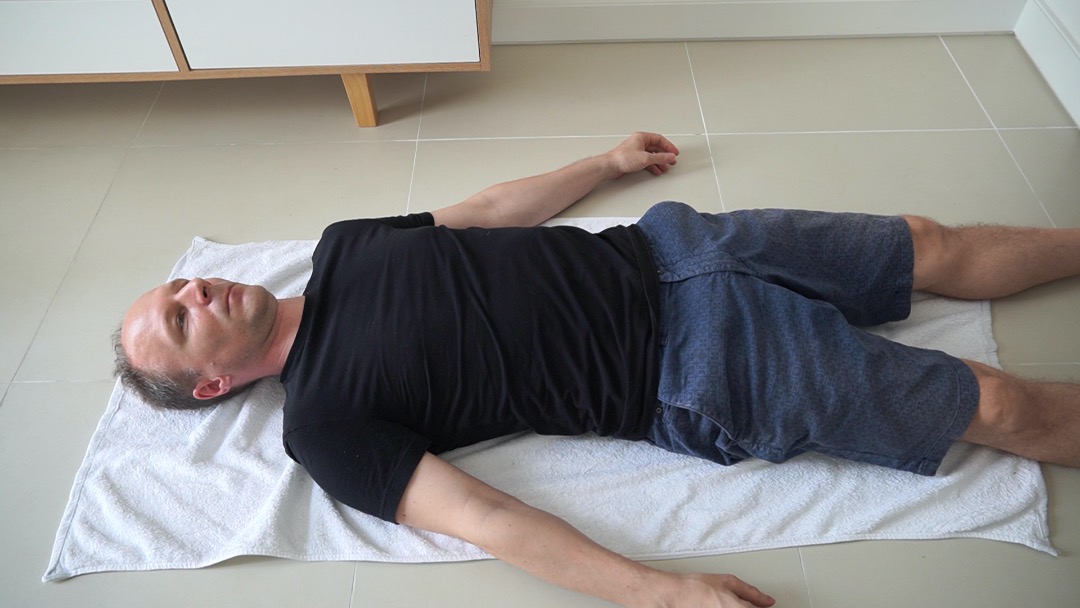
Supine, lie on your back.
Supine, be comfortable
In this lesson comfort is a condition for learning.
- Free up resources by lying down: therefore the nervous system does not have to deal anymore with opposing gravity and balancing to prevent falling.
Supine, be comfortable
In this lesson comfort is a condition for learning.
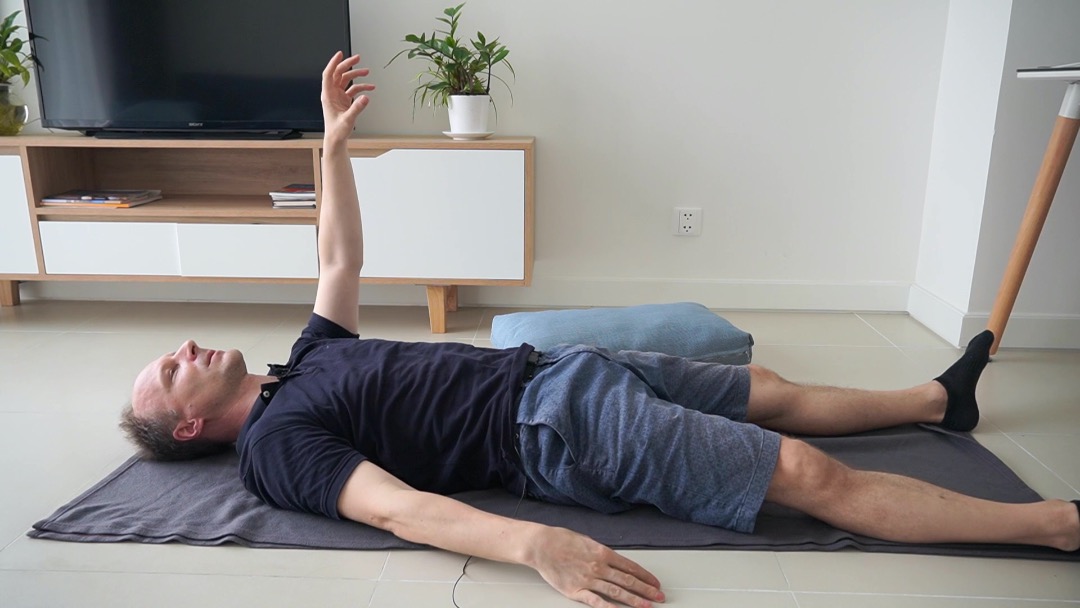
On the back, left arm towards the ceiling.
Hold left arm towards the ceiling
Find a balanced place, there should be not much effort to hold your arm.
- Is the palm of your left hand facing more downwards (towards the feet) or more to the right (towards the midline)?
Observe, accept, and admit how it is.
Hold left arm towards the ceiling
Find a balanced place, there should be not much effort to hold your arm.
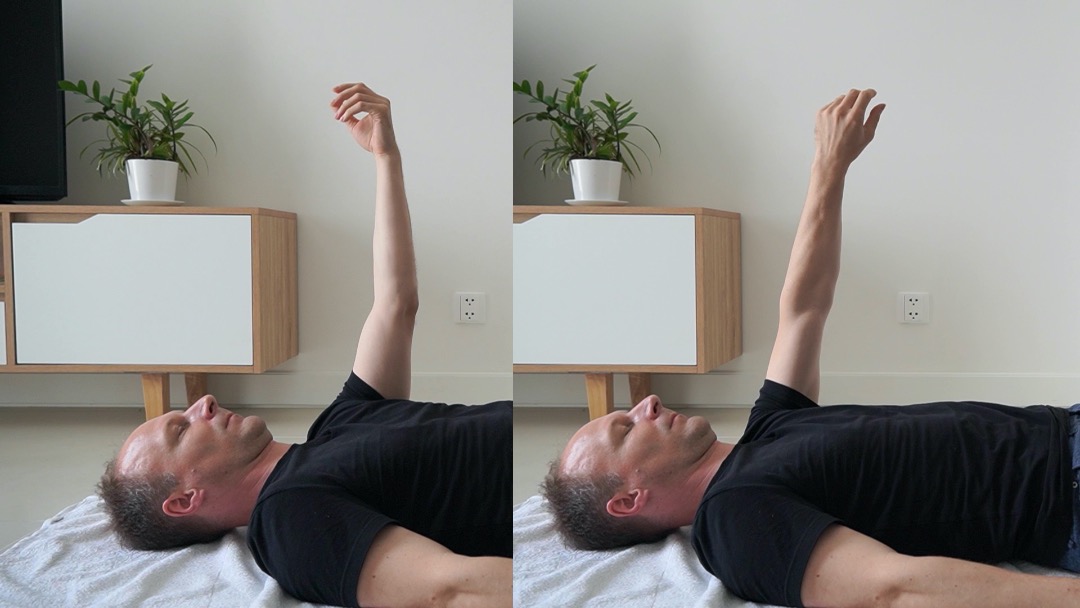
On the back, left arm towards the ceiling.
Turn left arm around its own axis
Find and sense where the movement is easy, and where it takes a bit more effort to move.
- Don't draw circles, the movement is a rotation, like a screwdriver.
Search and find your personal neutral, can you feel where it is? What is neutral for the human species?
Turn left arm around its own axis
Find and sense where the movement is easy, and where it takes a bit more effort to move.
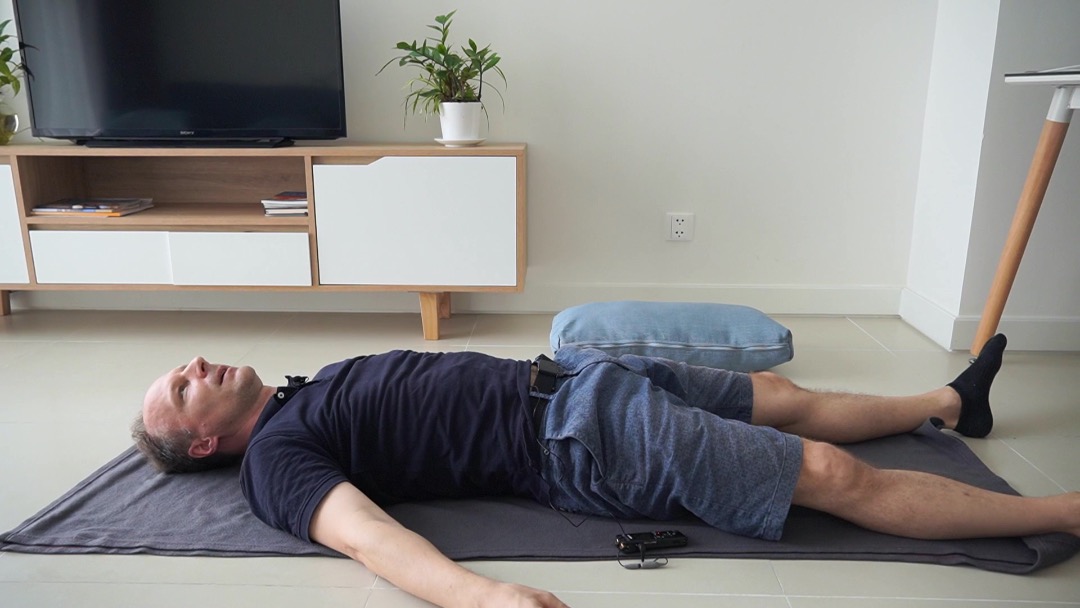
On your back
Rest on your back
Sense differences between your left and right arm.
- Become aware of differences in position. How is your arm resting now in relation to your body, as compared to 5 minutes ago? How long do your arms feel? How and where are your hands resting? Are your fingers ae more extended or curled up?
This kind of observation and the previous movements require to be more in a parasympathetic state. Calm and observant, in a „rest and digest” mode, rather than active like in fight or flight.
Rest on your back
Sense differences between your left and right arm.
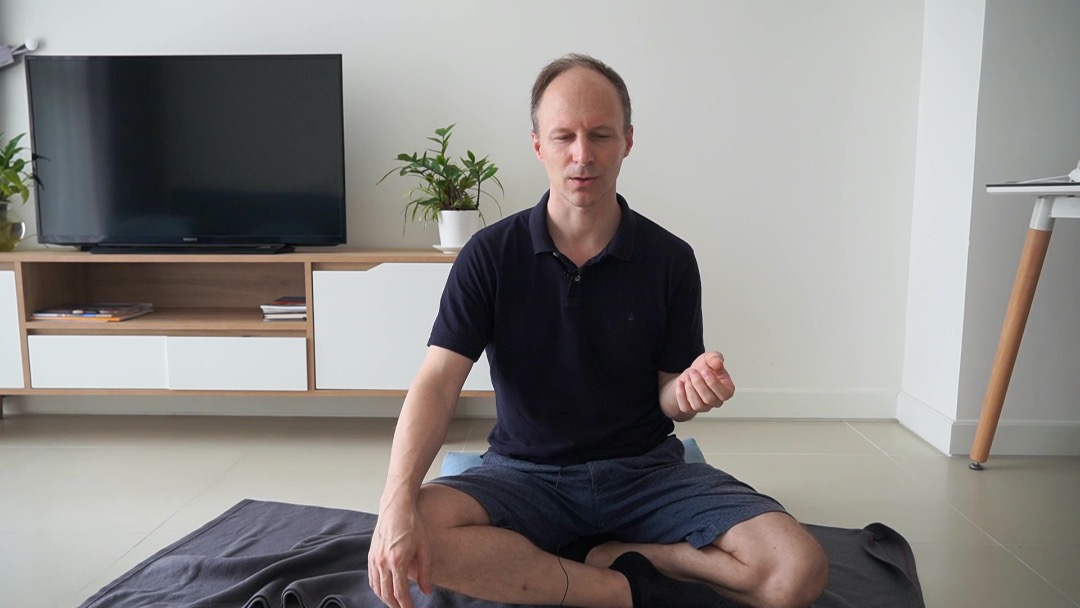
Sit with your left elbow touching your left side, and the left lower arm parallel to the floor, the left hand forwards in space.
Rotate left lower arm, palm up palm down
Do it really slowly, let go of unnecessary effort, feel the pull of gravity.
- The fingers will hang, open and lengthen when the palm is down… the hand will close when the palm is up.
Through sensing the two extremes we find what is the middle of those two. When the hands face one another we can manipulate objects.
Rotate left lower arm, palm up palm down
Do it really slowly, let go of unnecessary effort, feel the pull of gravity.
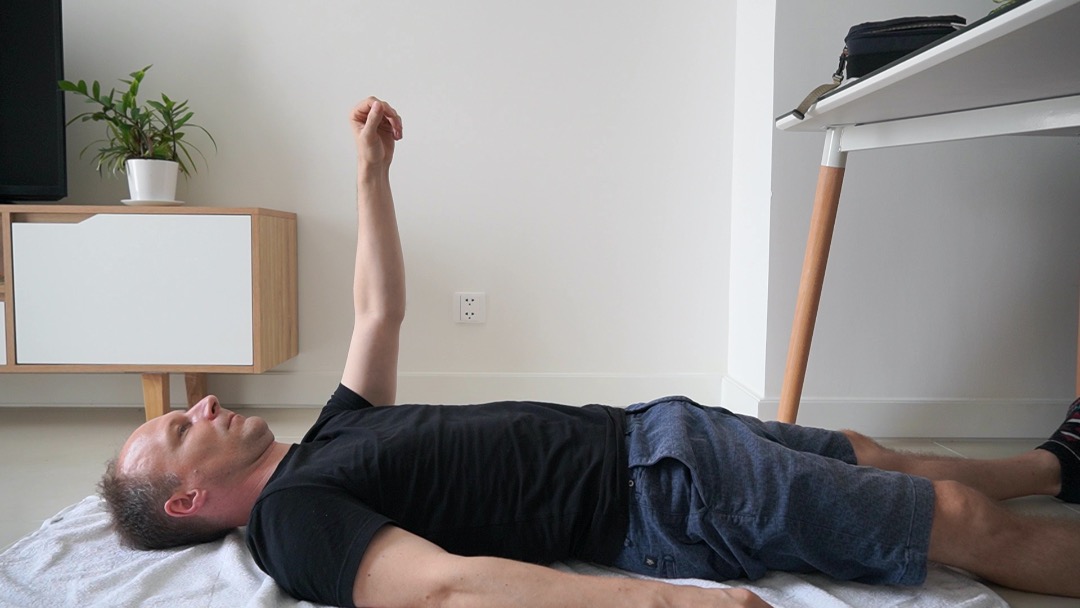
Supine, on your back, left arm extended towards the ceiling.
Rotate arm again, find most neutral position
Again like before, see how it feels now, find the middle position for your arm.
Rotate arm again, find most neutral position
Again like before, see how it feels now, find the middle position for your arm.
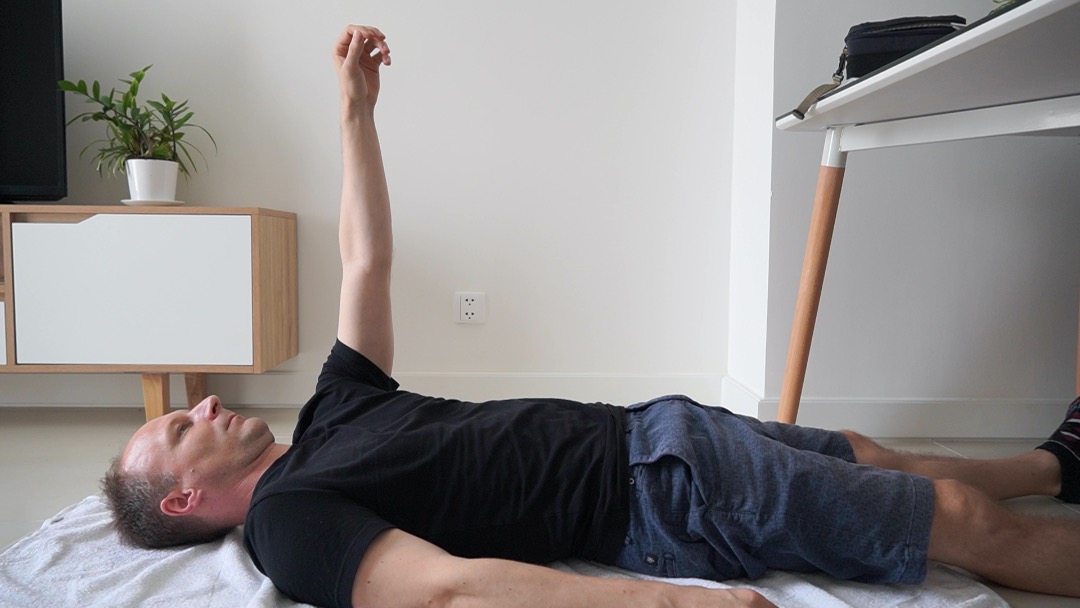
Supine, on your back, left arm extended towards the ceiling.
Lift left arm towards ceiling
Reach forwards a bit, then let your shoulder-blade fall back to the floor.
- Your shoulder-blade leaves the floor. Your arm stays vertical.
Breath freely.
Lift left arm towards ceiling
Reach forwards a bit, then let your shoulder-blade fall back to the floor.
Supine, on your back, left arm extended towards the ceiling, in your neutral position.
How is your head and neck responding?
Lift your straight left arm towards the ceiling. Let your shoulder-blade leave the floor.
- There's a connection (kinematic linkage) from your arm through your shoulder-girdle to your sternum.
If your would pull the arm of a skeleton without muscles or nervous system, what would his head do? It would roll to the right.
Did you hold your head, engage your neck muscles? We want to become aware of such unnecessary efforts.
How is your head and neck responding?
Lift your straight left arm towards the ceiling. Let your shoulder-blade leave the floor.
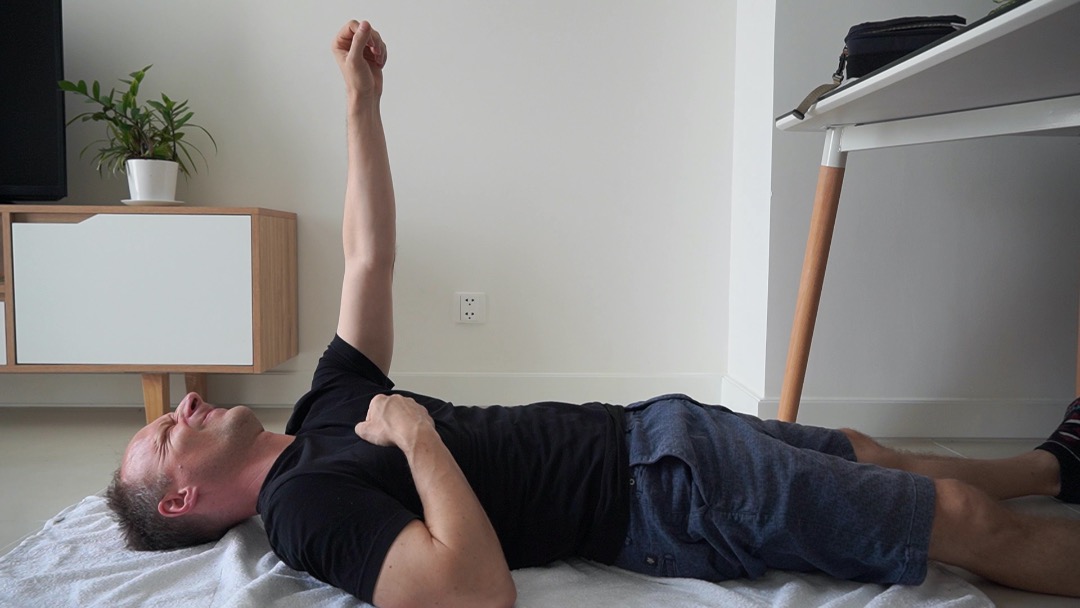
Supine, on your back, left arm extended towards the ceiling, in your neutral position.
Find ways to interfere
How can you make the previous movement more difficult, less fluent, less easy?
- Become aware of unintended effort.
Try to interfere by: Hold your breath. Hold your belly muscles tight. Clench your teeth. Tighten your right fist. Keep looking with your eyes to the left. What else can you do to interfere?
Find ways to interfere
How can you make the previous movement more difficult, less fluent, less easy?
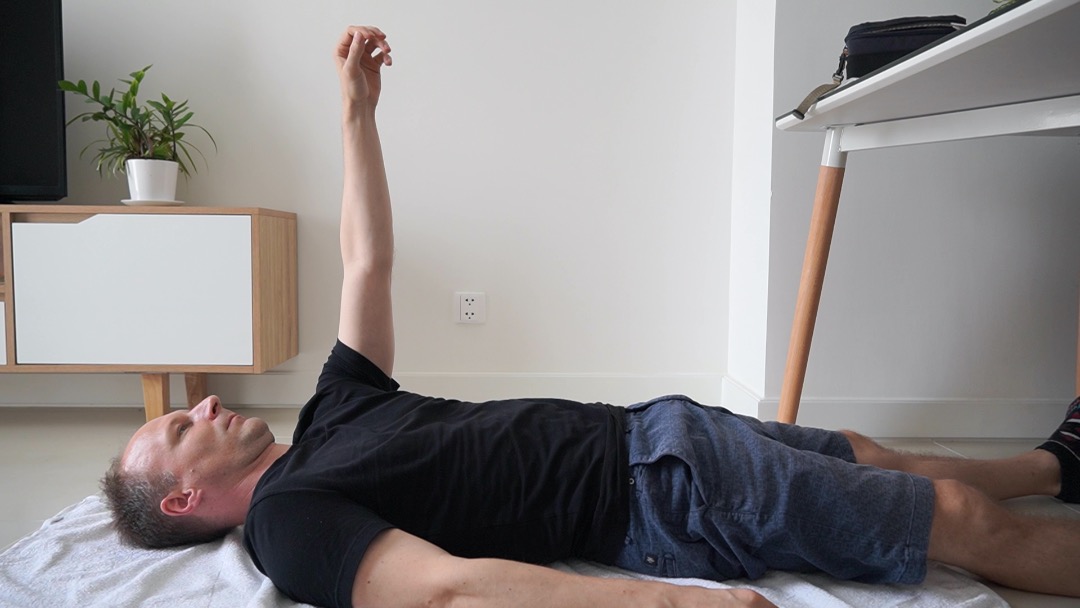
Supine, on your back, left arm extended towards the ceiling, in your neutral position.
Lift left arm, drop it again
Drop it on the hard point at the left shoulder blade, make fast movements.
- Don't hold your breath. Don't hold your neck on purpose. Go "bang, bang, bang".
Lift left arm, drop it again
Drop it on the hard point at the left shoulder blade, make fast movements.
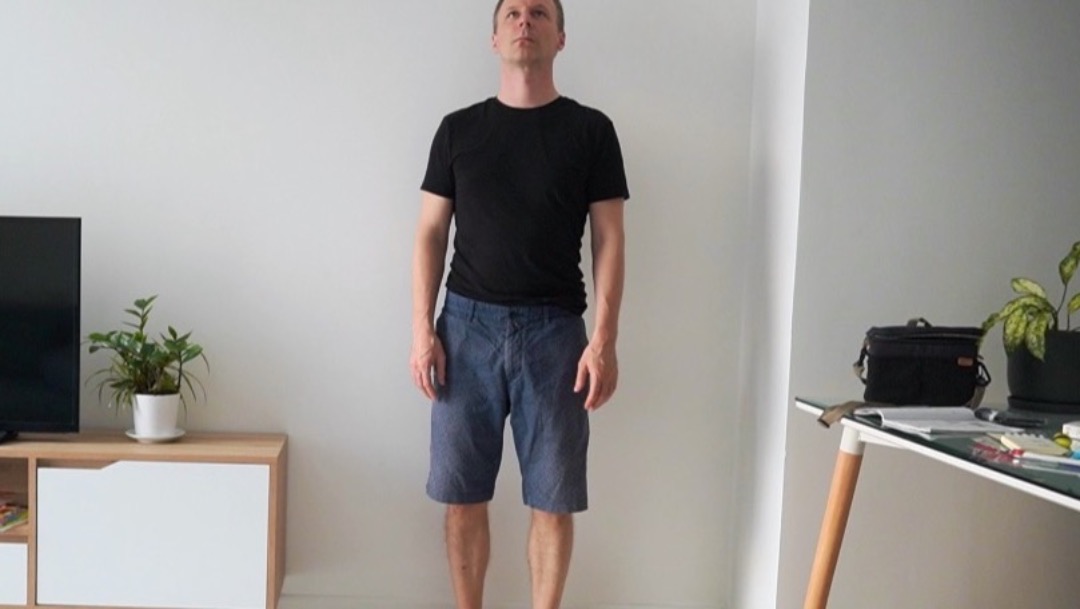
Stand
Sense differences
What do you feel in your shoulders, how do you stand on each leg, how is your walking?
- Your left arm might be longer, more relaxed. Your weight shifted to the left, your left shoulder lower. The left leg might feel different.
This makes for a comprehensive introductory class. It also might be „just” interesting for healthy adults. But it might be life changing for someone who just had a stroke.
Like with all art, there is no limit to improvement.
Sense differences
What do you feel in your shoulders, how do you stand on each leg, how is your walking?

